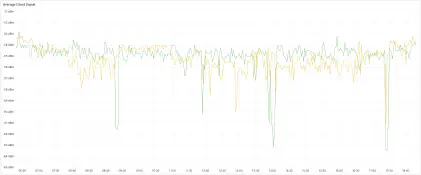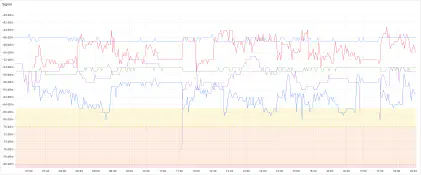Optimizing Wi-Fi Network Performance: Understanding Channel Utilization, Interference, and Client Balancing
Keeping an eye on your AP channel utilization for optimal network performance

David Hallum
September 27, 2023
In today’s hyperconnected world, Wi-Fi networks have become indispensable for both personal and professional use. However, ensuring optimal wireless network performance involves understanding key factors like channel utilization, interference, and client balancing. In this blog post, we will explore these concepts, why they matter, and how balancing the number of clients per Wi-Fi access point can significantly enhance your wireless network’s performance.
Channel Utilization and Interference
Channel Utilization: Wi-Fi networks operate over various channels within the 2.4GHz and 5GHz frequency bands. These channels allow multiple networks to coexist without excessive interference. However, these channels aren’t exclusive, and multiple Wi-Fi devices can occupy the same channel simultaneously. High channel utilization occurs when there are too many devices on the same channel, resulting in congestion and decreased network performance.
Channel Interference: Channel interference is a byproduct of channel utilization. It happens when multiple Wi-Fi networks or other wireless devices, like cordless phones and microwaves, share the same frequency spectrum. Interference can disrupt signal quality, lead to dropped connections, and cause slow data speeds.
Factors Contributing to Channel Interference:
Overlapping Channels: In environments with multiple Wi-Fi access points, channels may overlap. For example, channels 1, 6, and 11 in the 2.4GHz band are commonly used, but using other channels within this range can lead to overlapping channels and interference.
Nearby Networks: The presence of neighboring Wi-Fi networks on the same or adjacent channels can lead to interference.
Non-Wi-Fi Interference: Cordless phones, Bluetooth devices, and microwave ovens can emit radiofrequency interference, affecting Wi-Fi signal quality.
Physical Obstacles: Walls, floors, and other physical barriers can attenuate Wi-Fi signals, causing them to reflect or scatter and contribute to interference.
Balancing Client Load for Improved Performance
Balancing the number of clients per Wi-Fi access point is a vital strategy for enhancing wireless network performance. Here’s how it works:
Preventing Overcrowding: Distributing clients evenly across access points ensures that no single access point becomes overloaded. When an access point handles too many clients, it can lead to slower data rates and connectivity issues.
Improved Roaming: Proper client balancing encourages seamless client roaming. As clients move within the network, they can switch to an access point with a stronger signal, enhancing their experience.
Optimized Bandwidth: Load balancing helps manage the overall bandwidth consumption, allowing each client to receive an equitable share of available resources. This, in turn, prevents network congestion.
Minimizing Channel Interference: Balancing clients across access points can help reduce channel interference. When clients are evenly distributed, fewer access points share the same channel, leading to less congestion and improved network performance.
Best Practices for Client Balancing:
Access Point Placement: Strategically place access points to ensure even coverage throughout your space.
Load Balancing Algorithms: Utilize load balancing algorithms within your wireless network infrastructure to distribute clients more evenly.
Regular Monitoring: Continuously monitor network performance to identify areas with high client density and make necessary adjustments.
Upgrade Equipment: Older access points may struggle to handle a large number of clients. Upgrading to newer, more capable devices can improve client balancing.
Conclusion
Channel utilization, interference, and client balancing are crucial considerations for optimizing Wi-Fi network performance. By understanding these factors and taking appropriate steps to manage them, you can create a wireless environment that delivers consistent, high-speed, and reliable connectivity. Balancing the number of clients per Wi-Fi access point is a key strategy for ensuring that your network operates at its best, providing a seamless and efficient experience for all users.

